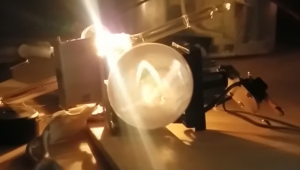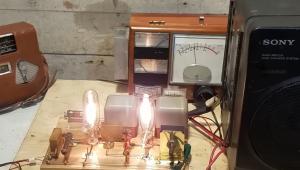Alas, Poor Plasma! We Viewed Him, Horatio

In other words, all good things must come to an end. More specifically, according to reports on Reuters and the Nikkei Business Daily, Panasonic will cease production of its display panels for plasma televisions in March 2014. (For now, no comment from Panasonic). Sources say Panasonic's last factory, the #2 Amagasaki plant, will be shuttered; perhaps it will be sold. The move would come not long after Fumio Ohtsubo, the chairman who pushed plasma, resigned in June. In any case, if reports are true, debates about the advantages of plasma aside, for Panasonic, plasma is over and done.
Panasonic’s plasma business has been struggling, but the move would take many by surprise and would occur sooner than many predicted. Panasonic has invested heavily in plasma manufacturing, and has continued to champion plasma while others have not. But finally, the handwriting appears to be on the screen. Reportedly, the writedown will be 40 billion yen ($413 million). It’s also worth noting that overall, Panasonic lost almost $1 billion in the TV business in 2012. The best that can be said is the 500 or so factory employees would hopefully be transferred to other Panasonic facilities.
The end of Japanese plasma would be the end of an era, in more ways than one. Beyond Panasonic’s woes, this is another sign of the eclipse of Japan’s once mighty TV industry. That industry, rising to prominence in the 70’s, formed the backbone of Japan’s juggernaut consumer electronics industry. Rival companies in the United States and Europe could not compete with the high quality and low cost of Japanese TVs. Now, it is Japan’s turn to feel the evolutionary sadness of a business model that has moved to other shores. Many “Japanese” televisions are manufactured in South Korea and China by other companies. Still in Japan are three LCD factories co-owned by Sharp, as well as a handful of assembly plants.
And, there is an even bigger picture to consider. For the first time in a decade, worldwide TV sales fell in 2012, down about 6%. Part of this is expected: the switchover from CRT to flat panel has been largely completed, and slowdown from saturation is inevitable. Another factor, perhaps more ominous, is that more and more people are watching smaller and small screens; the TV business may be in long-term trouble. It remains to be seen whether new technology such as 4K and curved screens can resurrect the consumer excitement.
And so you have it. Hamlet. Act 5, Scene 1. Fade to Black.

























































